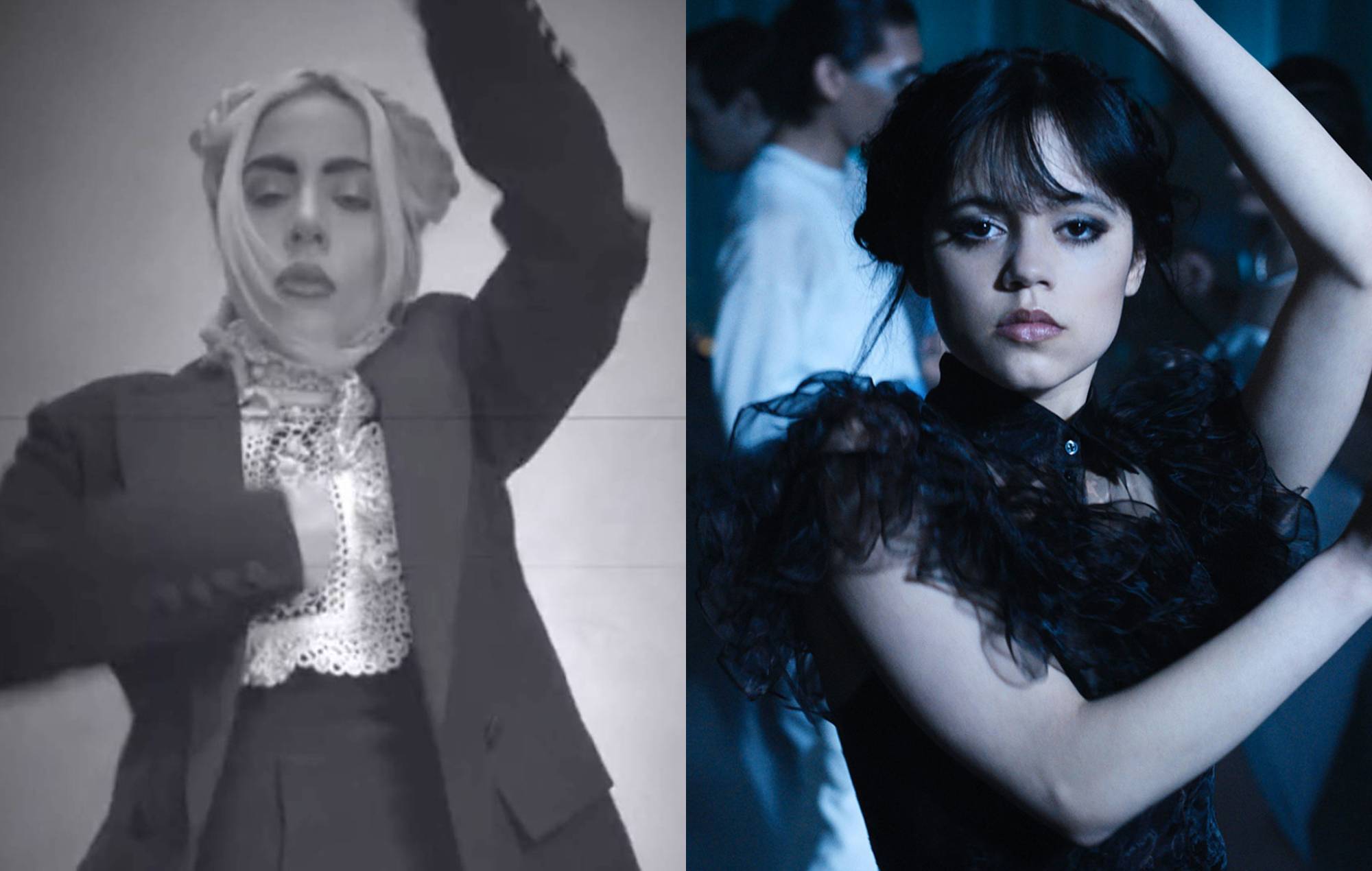
A cracking year for future classics, 1972 gifted us masterpiece records from some of music’s best-known icons. Fancy a trip down memory lane? Dig into these gems, which all celebrate half a century this year.
Al Green, ‘Let’s Stay Together’
Now a stone-cold soul classic, ‘Let’s Stay Together’ didn’t just give Al Green his only Number One pop hit; it also built upon the distinctive voice at the heart of previous release ‘Al Green Gets Next To You’ and saw the Forrest City, Arkansas artist produce some of the greatest work of his entire career. Green’s voice is the star of the show here, effortlessly growing from the confiding murmur of the title track to the soaring and spellbinding ‘How Can You Mend a Broken Heart’.
Who it influenced: Green’s Southern soul had a huge influence on hip-hop, and his biggest hit ‘Let’s Stay Together’ has been sampled by both Lil Wayne (2004’s ‘Earthquake’) and Public Enemy (1994’s ‘Live and Undrugged Pt. 1 & 2’).
Stevie Wonder, ‘Talking Book’
After signing to Motown imprint Tamla when he was just 11, Stevie Wonder claimed full creative control a decade later with a new record deal; 1972’s fittingly-titled ‘Music of My Mind’ taps up synth sounds and marks the artist’s first release at the artistic helm. That record kickstarted what’s widely remembered as Wonder’s classic period, and later the same year follow-up ‘Talking Book’ levelled up again. Home to huge Wonder staples like ‘Superstition’ and ‘You Are the Sunshine of My Life’, it knitted together a rich combination of warm horns, Moog synthesiser, funky Clavinet and a guest turn from guitarist Jeff Beck on ‘Lookin’ For Another Pure Love’.
Who it influenced: Though they couldn’t be further apart stylistically, Wonder’s genius use of Clavinet on ‘Superstition’ is what pushed Led Zeppelin to write the swaggering ‘Trampled Under Foot’.
Carly Simon, ‘No Secrets’
Recorded in London with pop producer Richard Perry, Carly Simon’s third studio album ‘No Secrets’ took the American singer-songwriter’s raw lyricism and fused it with the imprint of rock’n’roll’s stomp. Here she plucked inspiration from the civil rights activist and soul singer Odetta, the counter-culture folk artist Joan Baez and Simon’s own dad, a classical pianist. From the open-book honest of ‘We Have No Secrets’ (“We tell each other everything about the lovers in the past,” she sings, “and why they didn’t last”) to the smirk of ‘Waited So Long’ (“Daddy, I’m no virgin / And I’ve already waited too long”), even the break-up song at the centre of ‘No Secrets’ was defiant and cutting. “You walked into the party like you were walking onto a yacht,” bites Carly Simon in the opening moments of ‘You’re So Vain’ – featuring none other than Mick Jagger as an uncredited backing vocalist, and letting rip with theatrical, synthetic stabs of string.
Who it influenced: Taylor Swift – also a fan of keeping the people who inspire her songs under mysterious wraps – is a huge Carly Simon devotee, and the pair performed ‘You’re So Vain’ together back in 2013.
Can, ‘Ege Bamyasi’
A year after releasing the avant-garde classic ‘Tago Mago’, the German krautrockers Can returned with ‘Ege Bamyasi’, a strange-sounding, unwieldy record named after the Turkish word for tinned okra. Though the band often set out on sprawling, exploratory voyages, and drawn-out jam sessions, ‘Ege Bamyasi’ cuts such as ‘Soup’ and ‘Spoon’ feel far more concise. Then, there’s the album’s classic centrepiece ‘Vitamin C’. Skittering and fidgeting with lopsided funk, and boasting a mediaeval hook that sounds like the Zelda soundtrack – decades before Zelda even existed – it’s Can’s most magical work. Altogether now: “Hey you! . You’re losing, you’re losing, you’re losing / You’re losing your vitamin C”
Who it influenced: After he found it in the Woolworths bargain bin, Sonic Youth’s Thurston Moore was blown away by the band’s alien sounds, while Pavement’s Stephen Malkmus (who later covered the album in full with Von Spar) claims he listened to ‘Ege Bamyasi’ “every night before I went to sleep for about three years.”
Aretha Franklin, ‘Young, Gifted and Black’
A year after the breathtaking ‘Live at Fillmore West’ demonstrated Aretha Franklin’s deft command of rock’n’roll, her 18h studio album ‘Young, Gifted and Black’ was just as fearless, and showed the Queen of Soul at the absolute peak of her creative powers. Reimagining Nina Simone’s ‘To Be Young, Gifted and Black’ as a soaring gospel song, bringing the trill of Memphis organs to a staggeringly brilliant cover of The Beatles’ ‘Long and Winding Road’ and laying down the enormous grooves of ‘Rock Steady’ with soul legends like Donny Hathaway and Bernard Purdie, the song captures everything that made Franklin such an artistic genius in the first place.
Who it influenced: The album’s final track was a cover of ‘Border Song (Holy Moses)’ by Elton John, who admired Aretha Franklin’s musicianship in particular. When Franklin died in 2018, he called her passing “a blow for everybody who loves real music: music from the heart, the soul and the Church. Her voice was unique, her piano playing underrated – she was one of my favourite pianists.”
Lou Reed, ‘Transformer’
Two years after leaving Velvet Underground, Lou Reed struck out alone with a pair of 1972 albums. While his self-titled solo album seized on a bunch of unreleased songs originally intended for his former band’s record ‘Loaded’, it was Reed’s next album ‘Transformer’ that elevated him from cult singer to global star. This was partly thanks to long-time Velvet Underground fan David Bowie, who co-produced the album with his Spiders in Mars collaborator Mick Ronson. The result was a hugely influential slab of glam rock, crammed with glimmering piano arrangements, prowling basslines and Reed’s reference-rich lyrics: the parping ‘Goodnight Ladies’ quotes T.S Eliot’s classic poem ‘The Wasteland’ (and, in turn, Hamlet) while Reed’s signature song ‘Walk on the Wild Side’ nods to a number of superstars from Andy Warhol’s New York studio the Factory.
Who it influenced: Chicago songwriter Ezra Furman loves ‘Transformer’ so much that she wrote an entire book about it for Bloomsbury Publishing’s 33⅓ album focus series.
The Rolling Stones, ‘Exile on Main St.’
It was penned in a rented French villa where Rolling Stones were living as tax exiles, and recording for the band’s 10th studio album was a ramshackle, disorganised process, with sessions often carrying on late into the night – and various band members failed to turn up on time along the way. Despite the chaotic nature of its creation – and arguably, a lack of hit singles – ‘Exile on Main St.’ is now remembered as one of the Stones’ classic records, putting a modern new spin on the dark rootsy stomp of ‘50s blues, and distilling all the key elements of rock’n’roll – sex, excess, pleasure, hedonism – into a chaser shot.
Who it influenced: Liz Phair’s groundbreaking 1993 debut album ‘Exile in Guyville’ is her own, grunge-minded reimagining of the Stones’ 72 classic.
Elton John, ‘Honky Château’
Perhaps there’s something in the air at these mysterious French villas? Recording in just two weeks at an 18th-century château, Elton John set out to break new ground with ‘Honky Château’’s New Orleans horns and dark humour (see: third track ‘I Think I’m Going to Kill Myself’). Speaking to Sounds that year, John compared his studio ethos with songwriting partner Bernie Taupin to that of the “the Motown hit factory” and ultimately ended up breaking America with the record’s biggest singles ‘Rocket Man (I Think It’s Going to be a Long Long Time)’ and ‘Honky Cat’. Back in the UK, meanwhile, it cemented Elton John’s star status – and a year later, he returned to the Château d’Hérouville to record his magnum opus ‘Goodbye Yellow Brick Road’.
Who it influenced: ‘Honky Château’ didn’t just set the agenda for the rest of Elton John’s career; it also laid down the foundations for ‘70s soft-rock as a whole.
David Bowie, ‘The Rise and Fall of Ziggy Stardust and the Spiders from Mars’
In dreaming up his most infamous persona, David Bowie drew on everything from his rock heroes (Iggy Pop and Lou Reed, to name two) to a tailor’s shop called Ziggys, which he passed on a train. Although ‘The Rise and Fall of Ziggy Stardust…’ is often remembered as a rock opera concept album, its glam rock falling-from-grace storyline came together after it was recorded, with songs such as ‘Starman’ added to tighten up the narrative. Still, none of that takes away from the myth of Bowie’s bisexual alien persona and his shimmering jumpsuits. When he dramatically retired the persona just two years later (telling the crowd at Hammersmith Odeon they were watching “the last show that we’ll ever do”), the legend was immortalised in rock lore forever.
Who it influenced: From Madonna to St Vincent, Bowie’s Ziggy Stardust persona influenced the swathes of artists who carefully cultivate new musical characters for each new musical era.
Curtis Mayfield, ‘Superfly’
Along with Marvin Gaye’s ‘What’s Going On’ (1971), Curtis Mayfield’s soundtrack for Blaxploitation thriller Super Fly is one of the great ‘70s concept albums. Though its message is ultimately anti-drugs, Mayfield tells the stories of poor Black Americans living in abject poverty with compassion and complexity – his real target is the racist institutions in the US who prop up these vast levels of social inequality in the first place. “We can deal with rockets and dreams,” Mayfield sings on the sweeping ‘Freddie’s Dead’, referencing the US’s obsessive focus on winning its Space Race with the USSR, while discrimination rules back on home turf, “but – reality: what does it mean?” It’s paired with a landscape of wailing funk guitars and dark, pulsing grooves.
Who it influenced: ‘Super Fly’ had an enormous influence on hip-hop, with countless rappers in decades to come sharing their personal stories to highlight wider inequality and racism. ‘Pusherman’, for example, has been sampled in at least 25 rap songs, from Clipse’s ‘Grindin’ (2002) to Chance the Rapper’s ‘Pusha Man’ (2013).
Bobby Womack, ‘Understanding’
A major precursor to the emerging genre of disco (which arguably began the following year with Barry White’s Love Unlimited Orchestra and the Philly collective MFSB) ‘Understanding’s biggest hit was ‘I Can Understand It’, which became a dancefloor favourite in gay clubs and underground soul venues. Drawing on the expressive influence of everyone from Aretha Franklin to James Brown, the record shows Womack belting his heart out and making full use of his astonishing vocal, bringing a raw yowl to ‘Harry Hippie’ (a tribute to his brother, who later died) and injecting a grooving stomp into a cover of Neil Diamond’s ‘Sweet Caroline’.
Who it influenced: Womack had a monumental influence on white rock’n’roll musicians – The Rolling Stones called him “a true pioneer of soul and R&B” after his death in 2014. His blueprints become fully apparent on his cover of ‘And I Love Her’, a magical, soul-filled reworking of the Beatles’ tune.
Todd Rundgren, ‘Something/Anything?’
Thanks to earlier hits like ‘We Gotta Get You a Woman’, Todd Rundgren had a reputation as a piano-pounding troubadour as he began making his double album ‘Something/Anything?’ – an image he swiftly unravelled with the help of weed, peyote buttons, Ritalin and the most ambitiously cinematic work of his entire career. It’s home to the spacey, psychedelic squalls of ‘I Saw The Light’ and hulking power-pop gem ‘Couldn’t I Just Tell You’, some of his best-known classics sandwiched between moments of silliness – just look at tracks like ‘Piss Aaron’. Best of all is a pacier, mid-tempo version of ‘Hello, It’s Me’, which was originally written in 1967 with his old band Nazz.
Who it influenced: A young Prince; rumour has it the future star snuck backstage on several occasions to try and meet Rundgren.
T. Rex, ‘The Slider’
To start with, Tyrannosaurus Rex was an acoustic duo playing psych-tinged folk in varying shades of flower power – and after internal creative rifts led to the exit of his musical partner Steve Peregrin Took, Marc Bolan became increasingly drawn to amped-up, glammier sounds and shortened his band’s name to T.Rex. Often hailed as the first ever glam rock record, 1971’s ‘Electric Warrior’ began the reinvention – and a year later ‘The Slider’ pushed the glorious excess even further. It opens with the ecstatic cackle of ‘Metal Guru’, and the glitter-fuelled momentum doesn’t let up from here. Even its most outwardly conventional-sounding song ‘Mystic Lady’ smuggles surreal imagery into its twanging folk-ballad verses, dedicated to a “sliding riding Sorceress in your dungarees”. ‘Baby Boomerang’, meanwhile, is written about Patti Smith.
Who it influenced: The Smiths adored T.Rex and ‘Metal Guru’ directly inspired their own hit ‘Panic’.
Roxy Music, ‘Roxy Music’
After being fired as a ceramics teacher for singing in the classroom, Bryan Ferry, a fine art grad from County Durham, auditioned to sing in the London prog-rock band King Crimson. Though his voice wasn’t a fit, the band’s Robert Fripp was impressed all the same, and suggested that Ferry give E.G. Records a call if he ever formed his own band. Taking Fripp’s advice her founded Roxy Music soon afterwards with a web of loosely connected art school friends – with the early line-up also featuring synth-whizz Brian Eno as a technical advisor. Counting John Peel as an early-doors fan, Roxy Music’s weird and wonderful self-titled debut bagged them a number 10 in the UK albums chart, and its giddy tangle of references laid down the foundations for their glammy and totally eclectic spin on rock’n’roll.
Who it influenced: New wavers and new romantics everywhere, as well as Radiohead‘s Thom Yorke and Jonny Greenwood, whose side project Venus In Furs – which also featured Suede’s Bernard Butler and Roxy member Adam Mackay – covered ‘H2B’ for the 1998 movie Velvet Goldmine.
Neil Young, ‘Harvest’
Even Neil Young can’t make his mind up about ‘Harvest’ – first calling it his “finest album” and later dismissing it as middle-of-the-road. Though critics at the time weren’t completely won over either, listeners helped to make it 1972’s best-selling album in the US, and in 2015 Young’s fourth album was inducted into the Grammy Hall of Fame. The theatrical percussion of ‘There’s A World’ aside, it’s a fairly understated record; the songs are largely acoustic since Young was wearing a back brace for an injury during recording. Lyrically, it journeys from heartfelt love songs written for his then-partner Carrie Snodgress (“I fell in love with the actress,” he sings on ‘A Man Needs a Maid’, “she was playing a part that I could understand”) to the political protest of ‘Alabama’. Mellow as it may be, ‘Old Man’ and ‘Heart of Gold’ in particular have become Neil Young staples.
Who it influenced: Strip away the effects pedals and focus on Thom Yorke’s vocals and Jonny Greenwood’s intricate guitar lines instead, and you see most Radiohead (them again) songs have a little bit of Neil Young in ‘em.
Steely Dan, ‘Can’t Buy A Thrill’
In 1972 a little old band called Steely Dan released their debut album, a gem named after a lyric from Bob Dylan’s 1965 song ‘It Takes a Lot to Laugh, It Takes a Train to Cry’. At odds with the shimmering rock personas around them – Bowie’s Ziggy Stardust, the androgyny of Iggy Pop – the New York band stuck out like overall-clad sore thumbs, rebelling with their jazz influenced soft rock. Still, despite their obvious distaste for the mainstream, ‘Can’t Buy A Thrill’ is home to back-to-back alternative pop songs. It doesn’t get much more direct than the yowling ‘Reelin’ in the Years’ or the organ-laden ‘Dirty Work’. Further down the line, the band claimed they were using songs like this as a Trojan Horse for smuggling in left-field ideas.
Who it influenced: The mid-80s wave of ‘sophisti-pop’ bands. See: The Style Council, Curiosity Killed The Cat and early Everything But The Girl.
Jethro Tull, ‘Thick as a Brick’
When Jethro Tull’s breakthrough ‘Aqualung’ was hailed as a concept record in ‘71, their frontman Ian Anderson was taken aback; and when it came to writing its follow-up. He opted to go all-in on penning what he called “the mother of all concept albums”. Satirising the format’s grandeur and the seriousness of progressive rock in an onslaught of flute solos, Celtic melodies and Hammond organ, the band took inspiration from the gentle piss-taking of Monty Python for their three-track epic about a boy called Gerald Bostock. Very loosely based on Anderson as a child, Bostock wins a local newspaper’s poetry competition but has to give up his prize after he’s accused him of being rude and swearing on telly. The cover art bears a front page story announcing the Society for Literary Advancement and Gestation (SLAG, for short)’s decision to retract the award.
Who it influenced: Though Jethro Tull set out to take the mick out of solemn prog-rock, they ended up laying down the foundations for its more playful iterations. Also: Martin Prince from The Simpsons, who performed a snippet of the suite on the 2006 episode ‘Girls Just Want To Have Sums’, proving you never know who’s going to grasp the creative baton you’ve passed on.
The post All of these classic albums turn 50 this year appeared first on NME.





